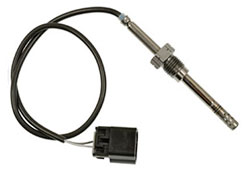
Diesel Nitrogen Oxide (NOx) Sensors
A High-Failure Part That's Required for Emissions Regulations
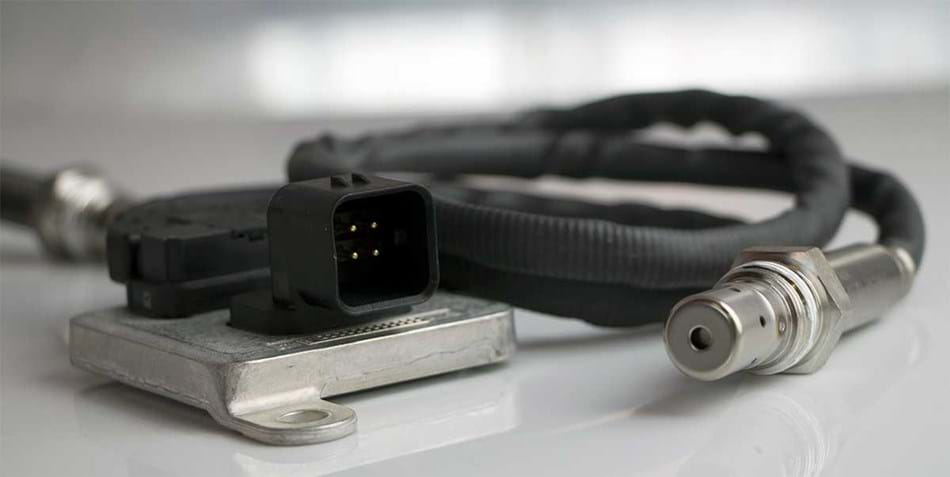
NOx sensors monitor the level of nitrogen oxide emitted by a diesel vehicle to ensure compliance with emissions regulations. Most engines feature two NOx sensors: an upstream and downstream sensor. Common causes of failure include soot buildup on the sensor, ECU water intrusion and/or damage to the cable, which will cause the check engine light to illuminate. To provide quality and coverage for this important and growing diesel category, we proudly introduce a line of Diesel NOx Sensors.
Interested in learning more about this product category? Contact your local Standard rep.
About NOx Sensors
Below is a diagram of a generic Selective Catalytic Reduction (SCR) system used on light-duty diesel passenger trucks. The assembly uses two NOx sensors: the first sensor (referred to as NOx sensor 1) is located near the turbo downpipe and measures engine-out NOx. The second sensor (referred to as NOx sensor 2) measures NOx levels exiting the SCR catalyst.

The SCR assembly contains a catalyst brick that requires DEF, or diesel exhaust fluid, for activation. A PCM-controlled pump and doser valve are used to meter DEF into the exhaust system upstream of the SCR brick. With the exhaust heat, the DEF will decompose into ammonia and carbon dioxide.
If too much DEF is injected into the exhaust, the SCR brick can become saturated with ammonia. Some of it will exit the SCR assembly. This is called “ammonia slip.” To a NOx sensor, ammonia and NOx look the same. Ammonia slip will cause the downstream NOx sensor to report an incorrect amount of NOx in the exhaust stream.
View Product Flyer
How to Know if NOx Sensor Is Reporting NOx Levels Correctly
While addressing SCR codes concerning DEF quality, NOx sensor failure or SCR efficiency, it may be necessary to “burn out” saturated SCR bricks and run the onboard diagnostic again. This can be done by performing a manual DPF regen. The heat produced during the manual regen will remove ammonia from the SCR bricks and allow for a more accurate onboard SCR system diagnostic.
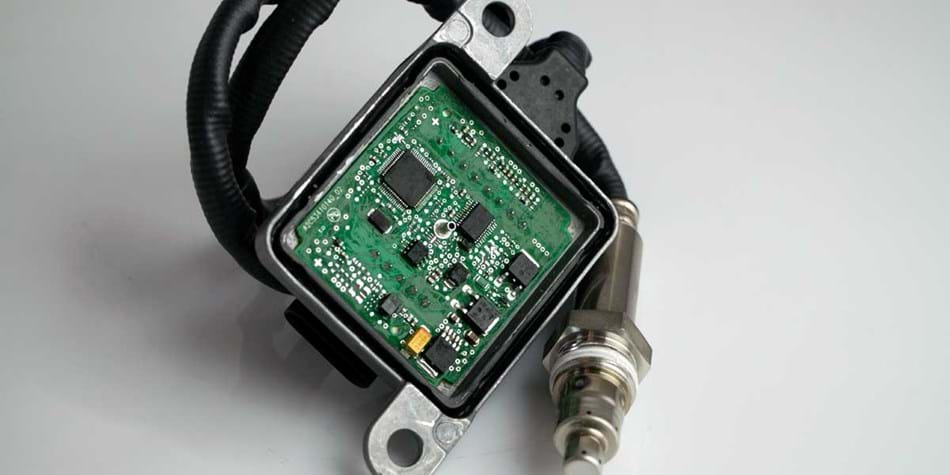
NOx Sensor Repair Tips
Diesel NOx Sensors feature complex technology. Here are some repair tips to keep in mind:
- A degraded doser valve (DEF injector) may set NOx DTCs
- Be sure to test the doser valve before replacing NOx sensors
- After replacing a NOx sensor, be sure to check service information for any reset procedures
- NOx sensors can't tell the difference between NOx and ammonia
- Performing a DPF regen will release ammonia from the SCR catalyst
Related Parts for 6.6L Duramax Engine
Diesel Emissions Fluid Pump
Our DFIP2 Diesel Emissions Fluid Pump is meticulously designed to maintain constant flow from DEF tank to DEF injector, resulting in peak performance during vehicle operation.
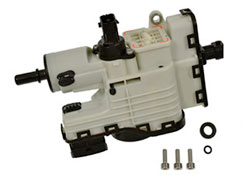
Diesel Emission Fluid Injection Nozzle
Our DFI2 Diesel Emission Fluid Injection Nozzle features precision-wound and trimmed solenoid windings that allow the computer to command efficient delivery of diesel exhaust fluid.
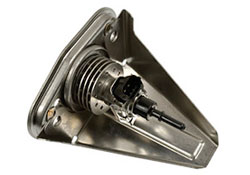
Diesel Emissions Fluid Temperature Sensor
We're proud to supply a comprehensive line of sensors for diesel applications, including this DFS1 Diesel Emissions Fluid Temperature Sensor.
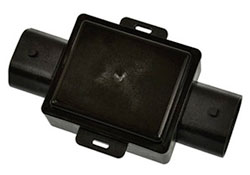
Exhaust Gas Temperature (EGT) Sensors
We're proud to offer a line of Exhaust Gas Temperature (EGT) Sensors, including this ETS173 for Duramax 6.6L engines.
